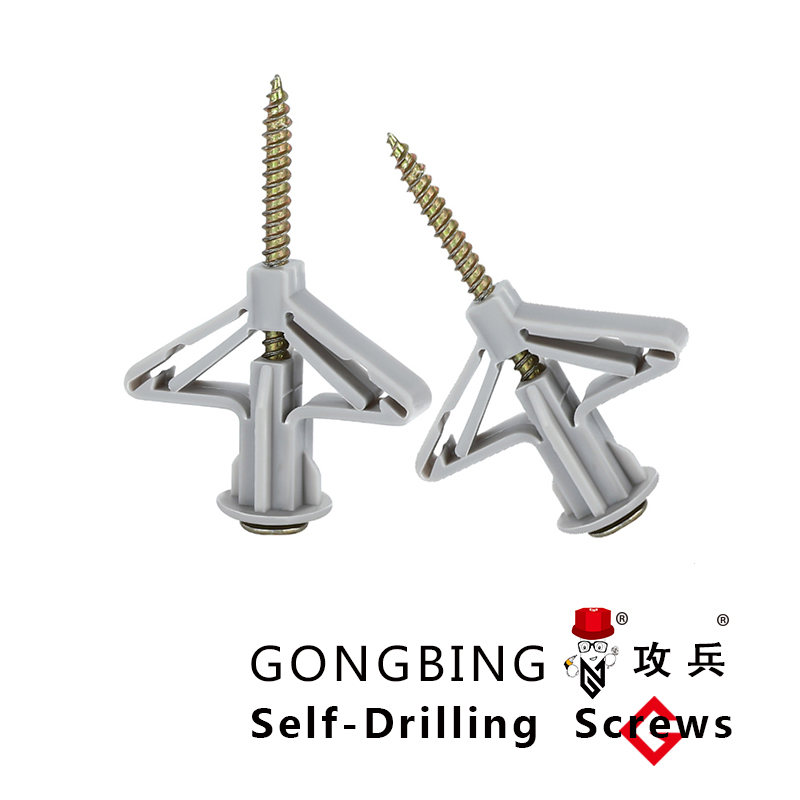self tapping screw with hex head
Understanding Self-Tapping Screws with Hex Heads
Self-tapping screws have revolutionized the way we approach fastening materials in a variety of applications. Among the different types of these screws, those with hex heads stand out due to their unique design and functionality. In this article, we will explore what self-tapping screws with hex heads are, their advantages, applications, and some tips for their usage.
What are Self-Tapping Screws?
Self-tapping screws are designed to create their own hole as they are driven into materials, eliminating the need for pre-drilling. This is achieved through a sharp point and a thread design that allows them to carve out a path in the material. Self-tapping screws are particularly beneficial in applications where speed and efficiency are critical, making them an excellent choice for both professionals and DIY enthusiasts.
The Hex Head Design
The hex head of a screw refers to its six-sided shape, which allows for a more substantial grip and torque when using tools like wrenches or socket drivers. This design is particularly beneficial in applications requiring higher tightening pressures or where a secure fit is crucial. The hexagonal shape reduces the likelihood of stripping and provides a means for better leverage, making it easier to drive the screw into tough materials.
Advantages of Self-Tapping Screws with Hex Heads
1. Efficiency The primary advantage of self-tapping screws is that they eliminate the need for pilot holes. This not only saves time during installation but also makes the process simpler, especially in hard-to-reach areas.
2. Versatility These screws can be used in various materials, including wood, metal, plastic, and composite materials, making them highly versatile for numerous applications.
3. Enhanced Grip The hex head design allows for a better grip compared to traditional screw heads like Phillips or slotted. This increased grip translates into better torque application, reducing the risk of slipping while driving the screw.
4. Resistance to Stripping The configuration of hex heads minimizes the chances of stripping the screw, which can be a significant concern with other head shapes, particularly during high-torque applications.
self tapping screw with hex head

5. Secure Fastening When properly installed, self-tapping screws with hex heads create a secure fastening that can withstand various stresses and strains, thus providing long-lasting durability.
Applications
Self-tapping screws with hex heads are commonly used in several industries
- Construction These screws are commonly used in framing, drywall installation, and securing other structural components. - Automotive Due to their strength and resistance to vibration, they are often used in assembling cars and trucks. - Manufacturing Many manufacturers rely on these screws in their assembly lines for effective production and quick assembly. - Home Improvement DIY projects, such as building furniture or outdoor structures, frequently use self-tapping screws with hex heads for reliable assembly.
Tips for Using Self-Tapping Screws with Hex Heads
1. Choose the Right Size Ensure that you select the appropriate size and length of the screw for your specific application. The diameter should align with the material thickness.
2. Use the Right Tool While hex heads can be driven with a wrench or socket, using a powered drill with a hex bit can speed up the process and enhance efficiency.
3. Don’t Over-Drive When installing these screws, avoid over-driving them into the material, as this can compromise their holding capacity and lead to stripping.
4. Consider Material Compatibility Be aware of the materials you are working with. Some self-tapping screws are specifically designed for metal, while others are better suited for wood or plastic.
5. Anti-Corrosive Coating If your project involves exposure to moisture or harsh environments, consider using screws that have an anti-corrosive coating to prevent rust and deterioration.
In conclusion, self-tapping screws with hex heads are invaluable tools in the world of fastening. Their efficiency, versatility, and secure fastening capabilities make them a preferred choice across various applications. By understanding their features and best practices for use, you can enhance your projects, whether they are professional or personal endeavors.
-
Weatherproof Plastic Expansion Anchors for OutdoorNotíciasJun.06,2025
-
Sustainability in the Supply Chain: Eco-Friendly TEK Screws ProductionNotíciasJun.06,2025
-
Load-Bearing Capacity of External Insulation FixingsNotíciasJun.06,2025
-
Double Head Bolts: Enhancing Efficiency in Industrial MachineryNotíciasJun.06,2025
-
Corrosion Resistance in Chipboard Screws: Coatings for Wholesale DurabilityNotíciasJun.06,2025
-
Butterfly Toggle Bolts : Enhancing Structural ResilienceNotíciasJun.06,2025
